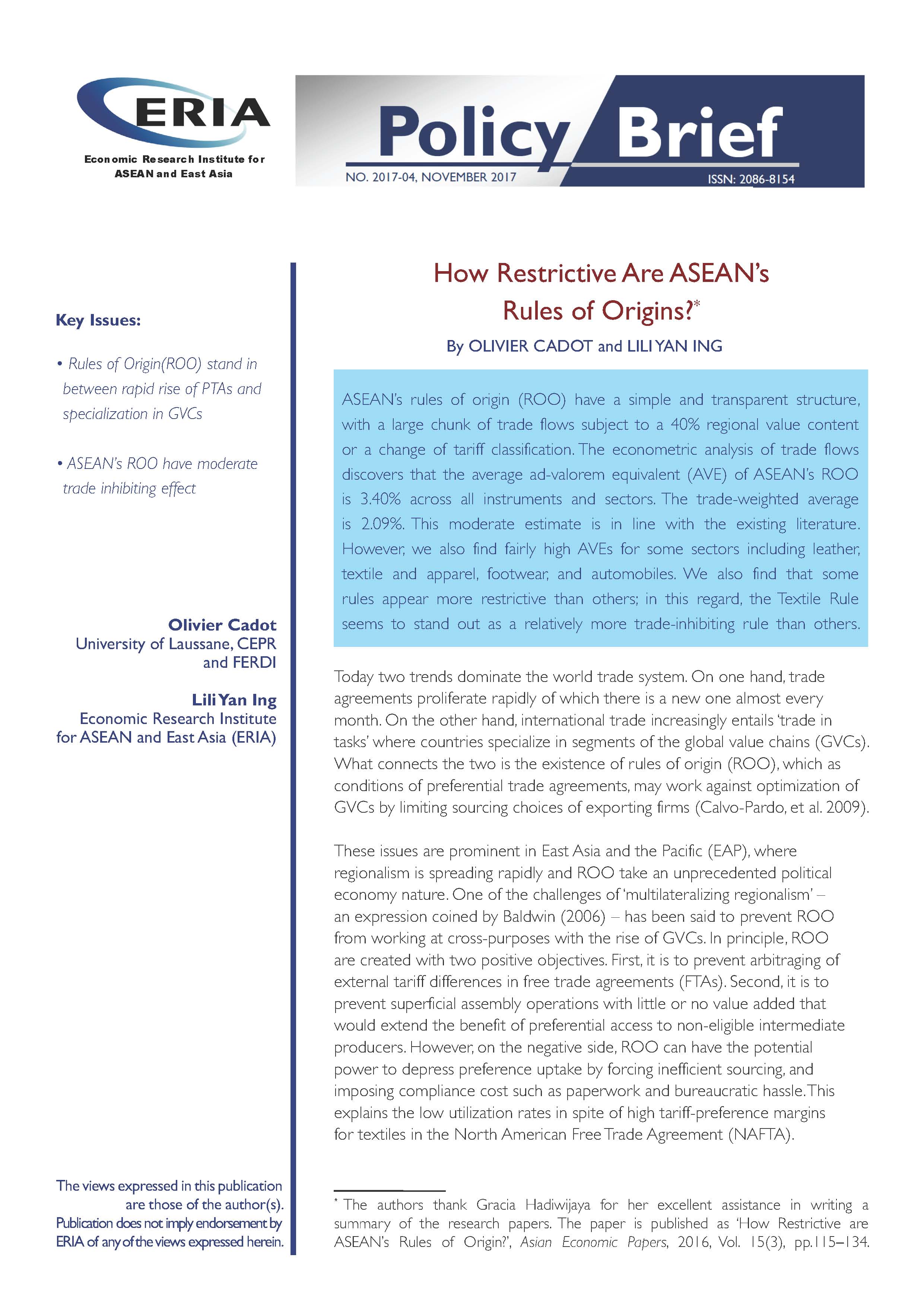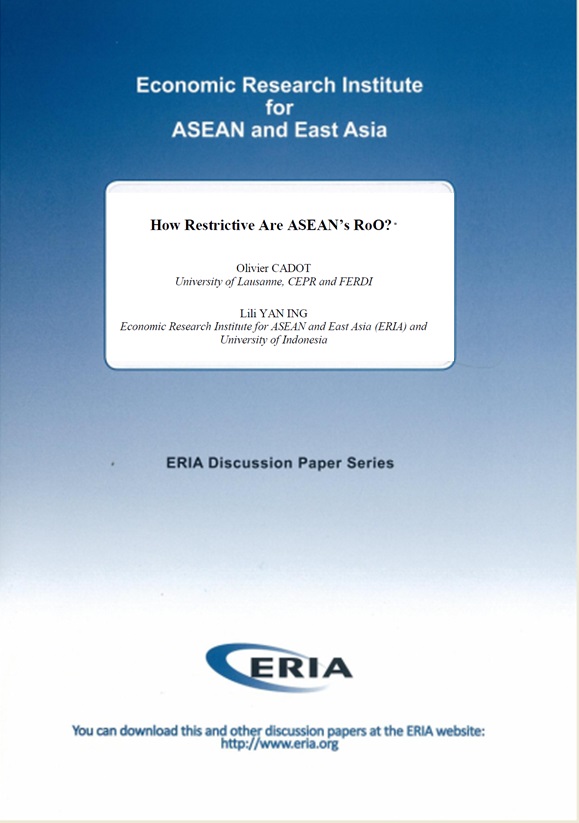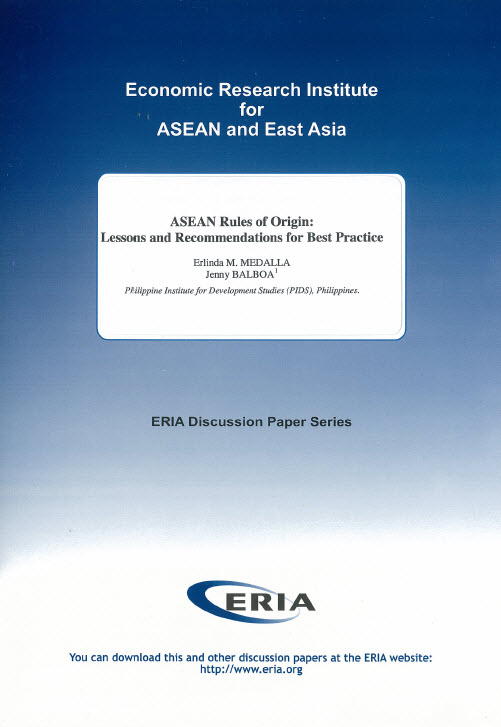How Restrictive Are ASEAN's Rules of Origins?

Print Article:
ASEAN's rules of origin (ROO) have a simple and transparent structure, with a large chunk of trade flows subject to a 40% regional value content or a change of tariff classification. The econometric analysis of trade flows discovers that the average ad-valorem equivalent (AVE) of ASEAN's ROO is 3.40% across all instruments and sectors. The trade-weighted average is 2.09%. This moderate estimate is in line with the existing literature. However, we also find fairly high AVEs for some sectors including leather, textile and apparel, footwear, and automobiles. We also find that some rules appear more restrictive than others; in this regard, the Textile Rule seems to stand out as a relatively more trade-inhibiting rule than others.




